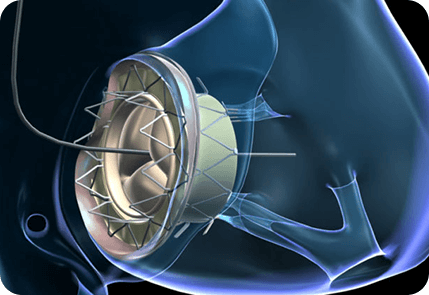 secretary@gopalamurugan.com
secretary@gopalamurugan.com +91 80560 88898
+91 80560 88898
+91 89400 88898
+91 91760 88898
 Scan QR Code
Scan QR Code
for Location
 secretary@gopalamurugan.com
secretary@gopalamurugan.com +91 80560 88898
+91 80560 88898 
 Scan QR Code
Scan QR Code 
Tricuspid valve dysfunction is a significant cardiac condition that can lead to severe health issues, including heart failure and reduced quality of life. Traditionally, treating issues with the tricuspid valve, especially after previous valve replacement, required another round of open-heart surgery. However, advancements in medical technology have introduced a less invasive solution: Transcatheter Tricuspid Valve Implantation (TTVI). This innovative procedure offers hope and improved outcomes for patients with dysfunctional tricuspid tissue valves, minimizing the need for conventional surgery.
What is Transcatheter Tricuspid Valve Implantation? Transcatheter Tricuspid Valve Implantation is a minimally invasive procedure designed to replace or repair a faulty tricuspid valve without the need for open-heart surgery. This technique is particularly beneficial for patients who have previously undergone tricuspid valve replacement and are now experiencing valve dysfunction, such as regurgitation or stenosis. TTVI involves inserting a new valve through a catheter, usually via a vein in the leg or neck, and guiding it to the heart where it is deployed within the existing valve.
Who Can Benefit from TTVI? TTVI is ideally suited for patients with a previously replaced tricuspid valve that is no longer functioning properly. It is an excellent option for those who are considered high-risk for traditional surgery due to factors such as age, medical history, or the presence of multiple health conditions. Patients experiencing symptoms of tricuspid valve failure, such as swelling in the legs, abdomen, or fatigue, may find significant relief and improvement in their quality of life with this procedure.
The TTVI Procedure: The TTVI procedure is performed under general anesthesia in a catheterization lab by a team of specialized cardiac physicians. The procedure involves making a small incision, usually in the groin, to insert the catheter. Using advanced imaging techniques, the catheter is navigated through the venous system to the heart, where the new valve is precisely positioned and deployed within the malfunctioning tricuspid valve. The entire process is meticulously monitored to ensure optimal placement and function of the new valve, typically requiring a few hours to complete. Following the procedure, patients may need to stay in the hospital for a few days for observation and recovery.
Transcatheter Tricuspid Valve Implantation represents a groundbreaking development in the field of cardiac care, offering a viable and less invasive alternative for patients facing tricuspid valve dysfunction. TTVI not only reduces the physical and emotional stress associated with open-heart surgery but also provides a life-enhancing solution for those previously considered too high-risk for conventional surgical procedures. If you or someone you know is struggling with a dysfunctional tricuspid valve, it may be time to consult with a healthcare professional to determine if TTVI is the right approach.
This content aims to provide patients and their families with comprehensive information about TTVI, enhancing their understanding of this innovative treatment option available for tricuspid valve dysfunction, suitable for inclusion on a healthcare website.